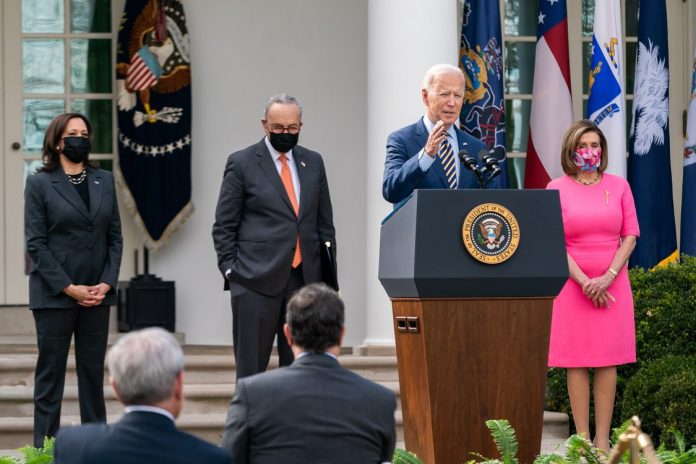Nearly 13 months after the first confirmed Covid-19 infection in the US, President Biden held a memorial as the country surpassed 500,000 deaths attributed to the pandemic. Mourning a great tragedy, President Biden noted these casualties surpass the lives lost during WWI, WWII, and the Vietnam War combined.
While alarmingly high fatalities signify a time of immense suffering, recent developments suggest the worst of the pandemic may be behind us. Covid-19 fatalities, cases, and hospitalizations are decreasing. Many universities plan to offer more in-person instruction during this fall. Texas ended its lockdown and mask mandate.
Some of these promising signs can be attributed to vaccination. According to the Wall Street Journal, over 100 million Americans have received at least one Covid-19 vaccine. Although the Pfizer and Moderna Covid-19 vaccines require two injections spaced two weeks apart, studies confirm that one injection provides effective immunity. Even as Covid-19 variants begin to appear across the US, t-cell tests confirm that the available vaccines can protect against mutations.
While there are many reasons to be optimistic that the worst of the pandemic is behind us, there have also been several signs governmental powers granted during the pandemic may not return to pre-Covid levels.
For example, Director of the US National Institute of Allergy and Infectious Diseases Dr. Anthony Fauci announced that Americans may still need to wear face masks through the year 2022 and that CDC guidelines may not loosen by Independence Day despite drops in Covid-19 infections. More recently, Dr. Fauci urged Americans to “not get so fixated on this elusive number of herd immunity” even with millions of covid-19 vaccines administered daily.
In another attempt to keep the economy stabilized during the pandemic, President Biden signed a $1.9 billion Covid-19 relief bill. However, as one Reason article notes, “Biden’s coronavirus relief package has almost nothing to do with the coronavirus.” The same article also notes much of the funding provided by the previous stimulus bill has not been spent.
Some speculate a fourth Covid-19 relief bill may soon follow.
Federal agencies have also experienced an expansion of scope and authority stemming from the pandemic. Last October, the Department of Health and Human Services gained the authority to limit its agencies and operating divisions from enacting rules and regulations to slow down the approval of a Covid-19 vaccine. In another bizarre expansion of regulatory power, the Centers for Disease Control gained the authority to prevent residential evictions for non-payment of rent, “to prevent the further spread of Covid-19.”
These and other regulatory powers have little prospects of ever being retracted.
Unfortunately, powers granted to the government during a crisis are rarely revoked. In his pioneering book Crisis and Leviathan, economist and historian Robert Higgs explains the growth of government often displays a ratchet effect: expanding during a crisis but seldom returning to its pre-crisis level. Consequently, crises frequently expand the role and scope of government with little hope of containing it in the long run.
Pandemics and other public health crises are no exception to the ratchet effect. Writing last March as states began to shut down and the first Covid-19 spending bill was passed, Robert Higgs and Professor of Economics at George Mason University Don Boudreaux asked these hard-hitting questions:
“Will the quarantine of millions of people become a precedent? Will broad-scale distributions to the general population without a means test become an enduring public demand even when normal times return? Will the Fed’s exchange of trillions of dollars for rotten securities become a lasting feature of its monetary policy?”
Nearly a year later, we are getting our first glimpse of the answers. So far, history may be poised to repeat itself.
